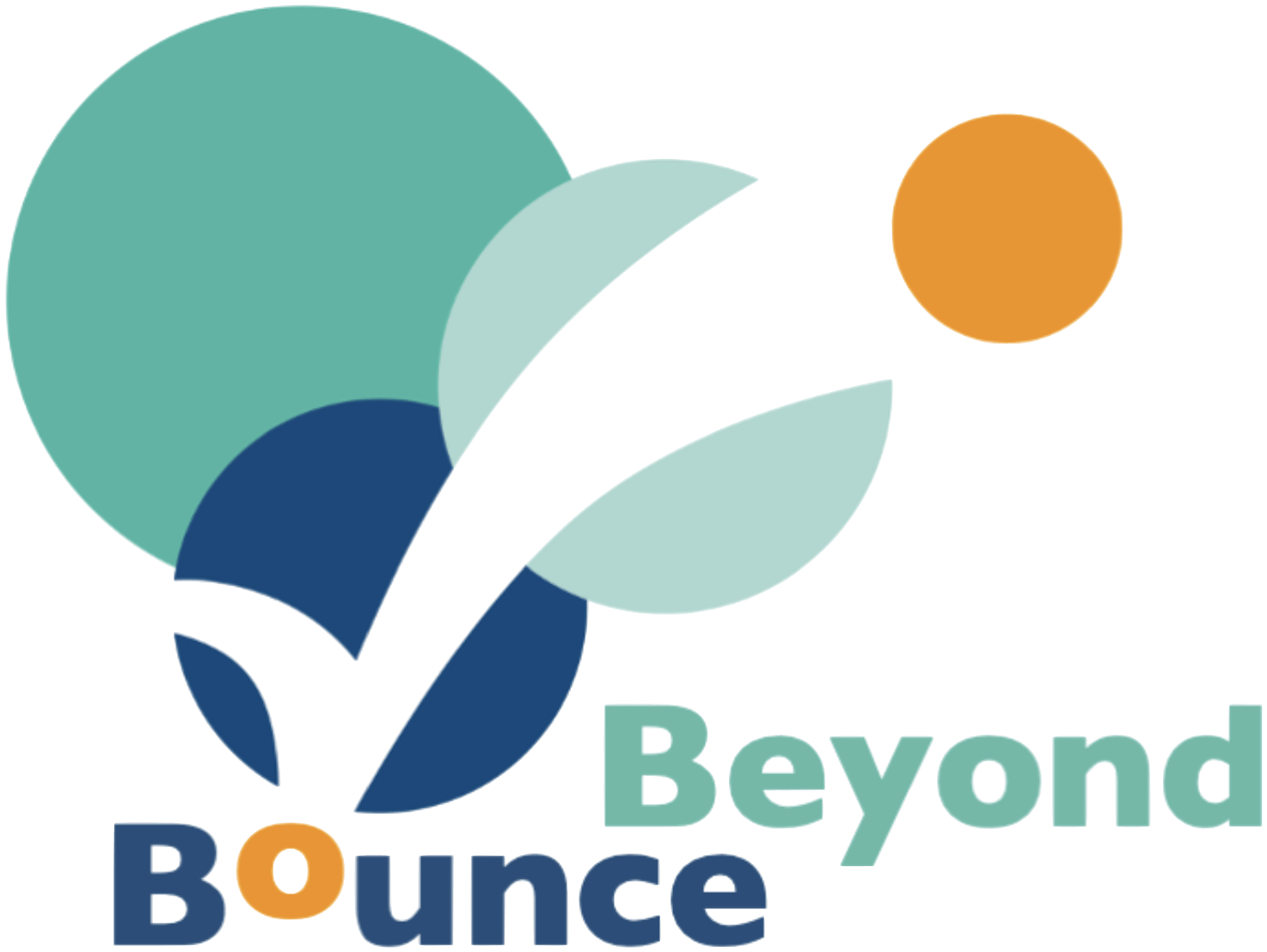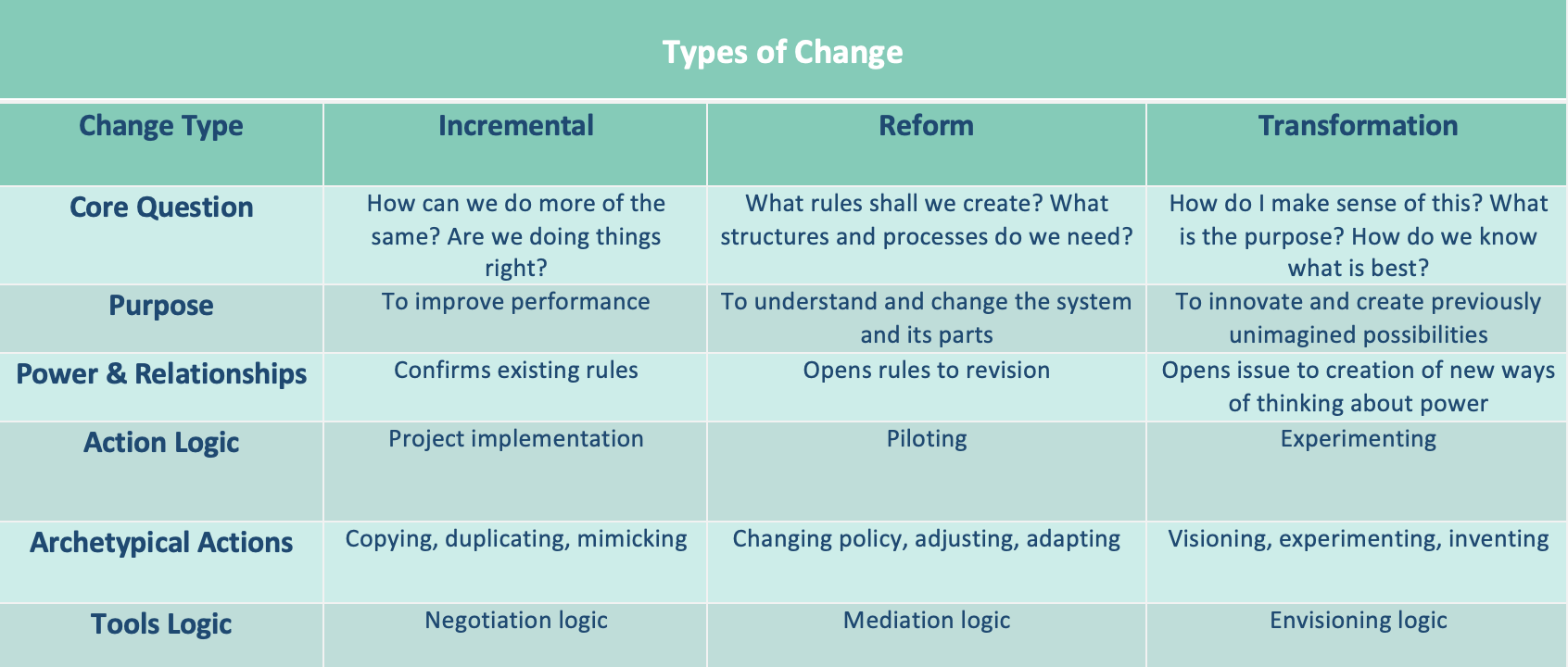Transformation
Transformation: One of Three Types of Change
Substantial increased ability to support transformation arises with distinction between different types of change, recognizing that transformation is a specific type that requires particular tools, strategies, mindsets, and actions.
One type of change is incremental. This is doing more of the same, within the current rules. It’s what happens when Starbucks opens another store: it’s something that’s been done many times before and there’s a well-known set of activities and steps in doing it. Efficiency is a major concern. A key activity is negotiating within a set of parameters that are quite well known. The repetitiveness allows produces best practices.
A second type of change is reform. It arises with dissatisfaction of the current rules and structures for doing things, with effectiveness as a major concern. This involves policy reform or organizational restructuring, which produces new reporting mechanisms and relationships, while maintaining the same goals and objectives. A key activity is mediating and discussion to identify new rules. Because of the newness the reform produces, there are not previous comparables and good practice, so best practice, is the standard.
Transformation is a third type of change. It questions the basic ways of thinking about issues and understanding about the way things work. This involves redefinition of goals (eg.: from producing energy to producing sustainable energy) which arise from a new understanding about the way things work (eg.: carbon emissions result in climate change) and produce fundamental change in operating logics (eg.: from “mining” of nature, to harmony with nature). This usually involves deep shifts in power structures (eg.: away from carbon extractors). In transformation, a key activity is visioning new possibilities that require radical innovation socially and often technologically, and certainly societally. The key activity is trying to do things in fundamentally new ways – experimenting. This is often at large scale, such as with reorganizing national energy programs. And it often involves rethinking traditional boundaries (such as “national”). Giving this radical novelty, there are continuous cycles of emergent learning. “Efficaciousness” where new thinking about measures is the metrics concern.
The term “transformation” is usually used to mean change that is big and complex, and will take time. Indeed, it’s associated with paradigm shifts, radical change/innovation/alternatives and transitions.
Transformation examples
- From carbon-based to carbon neutral energy systems. Change in core logic technologically and understanding of socio-ecological relationships.
- From incarceration (or worse) to marriage equality. Change in core values, social norms and understanding of gays and lesbians.
- From apartheid to post-apartheid. Change in core values, social norms and political system rules.
- From war to peace in Northern Ireland. Change in core values and social norms.
- From centralized to decentralized: Change in power structures and governance mechanisms.
- From the world is flat to the world is round. Change in ways of thinking about the world.
These three types of change interact. Successful transformational experiments require reform to support destruction (eg.: of carbon miners) as well as of creation (eg.: of sustainable energy producers). Reforms, in turn produce new enabling environments and rules to support incremental change.
How to support this complex transformation process through appropriate tools, strategies and actions, is the heart of the work of Bounce Beyond. Our societies are today structured to resist transformation, such as the current financing and assessing processes. We are organized around stories and myths (eg.: the current economic narrative) that require changing. We need to create radical innovation that makes sense for not just physical technologies and investment returns, but also for social-ecological impacts. And we need to build the new capacity to support all of this.
The distinctions in change have arisen from two sources. One is rooted in the 1970s-80s work of Chris Argyris and Don Schon at MIT, on learning processes. They distinguished between single- (incremental) and double- (reform) loop learning, later expanded to include triple-loop (transformation) learning. Waddell presented these in a 2007 article as types of change, and further modified them to produce the current frame. The other source is rooted in the natural sciences and the concept of “resilience” with Crawford Holling and later Mark Pelling with mitigation-adaptation-transformation. Bounce Beyond emphasizes the first source because the learning framework opens doorways to strategically developing transformation.
- Holling, C, S Carpenter, and W Brock. “Discoveries for Sustainable Futures in: L. Gunderson, C. Holling (Eds.), Panarchy: Understanding Transformations in Human and Natural Systems,” 2002.
- Waddell, Steve. 2007. “Realising global change: developing the tools; building the infrastructure.” The Journal of Corporate Citizenship (26):69-85.
- Waddell, Steve. 2011. Global Action Networks: Creating our future together. Bocconi University on Management. Hampshire, UK: Palgrave-Macmillan.
- Pelling, Mark. 2010. Adaptation to climate change: from resilience to transformation: Routledge.


